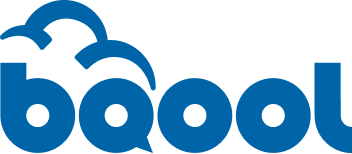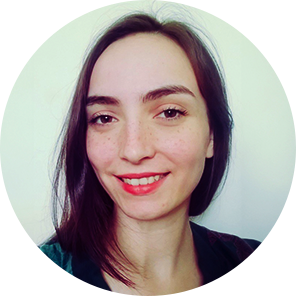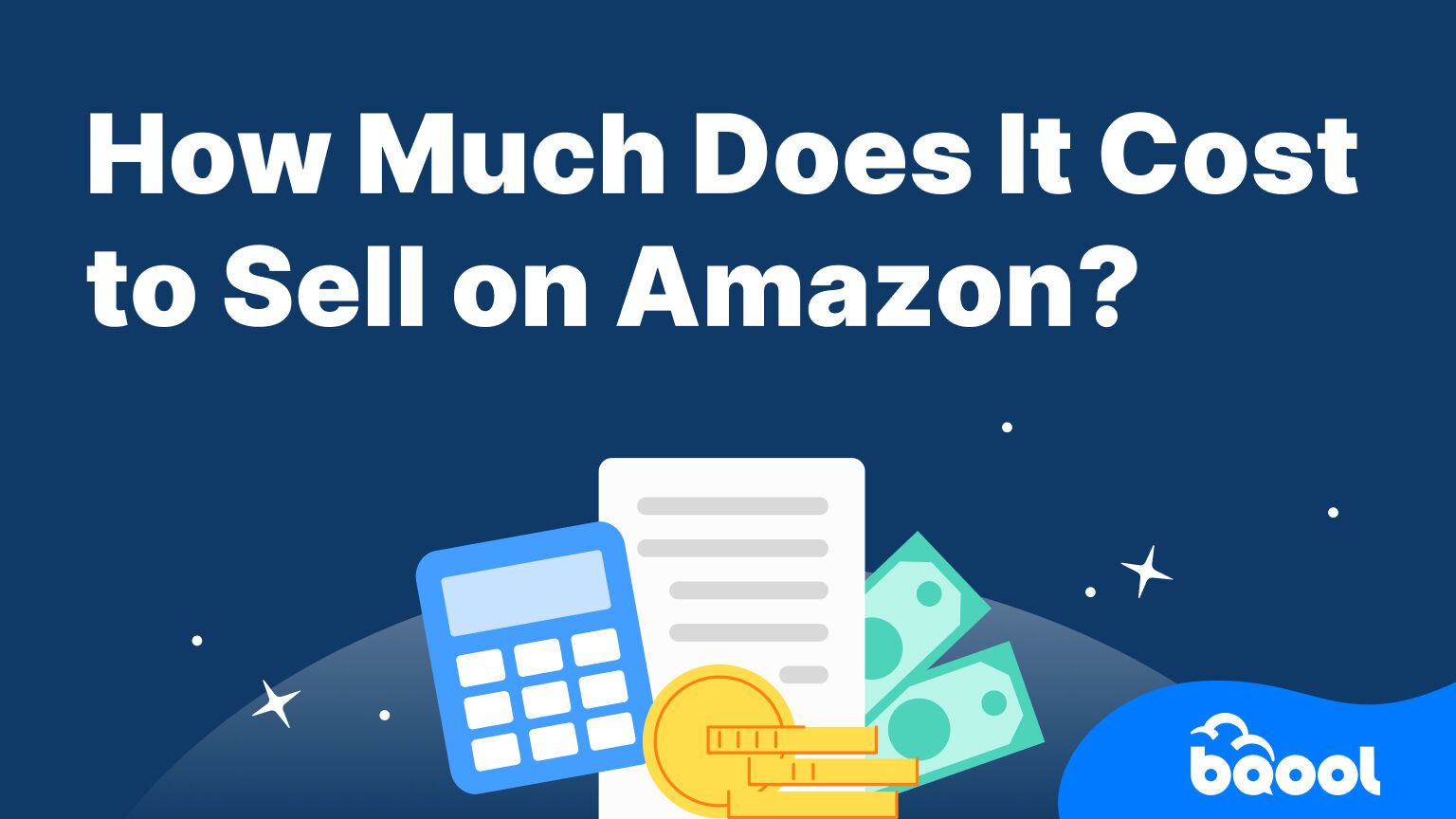What is an Amazon Referral Fee and How it Affects Your Profit Margins?

Every time you make a sale on Amazon, the platform charges what’s known as a referral fee; a commission Amazon collects for hosting your products and processing your sales. But, what is an Amazon referral fee?
Knowing what an Amazon referral fee is and how it’s calculated is essential for accurately estimating your costs and protecting your profit margins.
Overview
What Exactly Is an Amazon Referral Fee?Referral Fee Rates by CategoryHow Amazon Referral Fees Are CalculatedThree Ways Amazon Calculates Referral FeesRefunds & Referral FeesHow to Find Referral Fees in Seller CentralBQool’s Amazon Referral Fee CalculatorWhy Referral Fees Matter for Profit MarginsStrategies to Manage Referral FeesHow BQool’s AI Repricer HelpsFAQsConclusion
What Is an Amazon Referral Fee?
An Amazon referral fee is basically Amazon’s commission for helping you sell a product in their marketplace. Every time you make a sale, Amazon charges a percentage of the total sale amount.
The referral fee percentage also varies depending on your product category. On average, sellers can expect to pay between 6% to 45%, with most categories landing around 15%.
To help you plan your costs, we’ve summarized the most popular Amazon seller categories and their current referral fee rates below. This quick-reference chart is based on the latest data from Amazon Seller Central and reflects the standard U.S. marketplace fee structure.
Amazon Referral Fee Rates by Category
How Are Amazon Referral Fees Calculated?
Amazon referral fees follow a straightforward formula, and understanding the components makes it easier to estimate your costs. For every item you sell, Amazon charges either a percentage of the total sales price or a minimum referral fee, whichever amount is higher.
Referral Fee =
(Item price + delivery charges + gift-wrap charges) × Category Referral Rate
OR the applicable minimum referral fee, whichever amount is greater.
Below is a breakdown of what goes into this calculation.
1. Total Sales Price
Amazon calculates the referral fee based on the total sales price, which includes:
- Item price, which is the product’s listed selling price
- Delivery charges, if you charge shipping while fulfilling the order yourself
- Gift wrap charges, if the buyer chooses gift wrapping
Taxes collected through Amazon’s tax calculation services are not included.
Example
Item price: $25.00
Delivery charges: $4.50
Gift-wrap charges: $3.50
Total sales price = ($25.00 + $4.50 + $3.50) = $33.00
2. Category Referral Fee Rate
Each category has a specific referral fee percentage. Amazon applies this rate to the total sales price when the order ships.
Example
A Home & Kitchen item with a total sales price of $33.00 has a 15% referral rate.
Referral fee = ($33.00 × 15%) = $4.95
3. Minimum Referral Fee
Most categories have a fixed minimum referral fee. If the percentage-based fee is lower than the minimum, Amazon will charge the minimum amount instead.
Example
Total sales price: $1.00
Referral rate: 15%
Minimum referral fee: $0.30
Percentage-based fee = $1.00 × 15% = $0.15
Referral fee charged = $0.30 because $0.15 < $0.30
The Three Ways Amazon Calculates Referral Fees by Category
Some Amazon categories use different referral fee percentages, and these fees are always based on the total sales price. Depending on the category, Amazon uses one of three main fee structures: flat rate and tiered rates with different thresholds (single threshold and progressive threshold).
1. Flat Rate Categories
Flat rate categories are the simplest. The referral fee percentage stays the same no matter what the product costs.
Example
The Home & Kitchen category charges a flat 15% referral fee with a $0.30 minimum per item.
Whether your water bottle sells for $50 or $500, the same percentage applies.
2. Tiered Rate: Single Threshold
In this structure, Amazon uses one price breakpoint (threshold) to determine the fee. Once the total sales price passes that threshold, the entire price is charged at a different rate.
Example
In Beauty, Health & Personal Care, Amazon charges:
- 8% for products priced $10.00 or less
- 15% for products priced above $10.00
How it works:
For an $8 item: $8 × 8% = $0.64
For a $12 item: $12 × 15% = $1.80
3. Tiered Rate: Progressive Threshold
Some categories use a progressive, portion-by-portion fee, similar to how income tax brackets work. Different parts of the price are charged at different percentages.
Example
In Furniture, Amazon charges:
- 15% on the portion of the price up to $200
- 10% on the portion above $200
If the item sells for $500:
First $200 → $200 × 15% = $30
Remaining $300 → $300 × 10% = $30
Total referral fee = $60
Does Amazon Refund Referral Fees?
Yes, if you refund a customer’s order, Amazon will also refund you the referral fee you originally paid, minus a small refund administration fee.
When you issue a refund, Amazon credits you back the referral fee based on the portion of the order you refunded.
Amazon then deducts a refund administration fee, which is the lesser of $5 or 20% of the original referral fee.
This refund process happens at the time the refund is created in your Seller Central account.
How Amazon Refunds Referral Fees
Refund Admin Fee =
Minimum $5.00 OR 20% × original referral fee (whichever is lesser)
Example
For instance, you sell a kitchen blender that falls under the Home & Kitchen category.
The referral fee rate is 15%, which comes out to $10.05 (15% × $67).
Now, let’s say the buyer cancels and you issue a full refund. In that case, Amazon gives back most of your referral fee but keeps a small portion as a refund administration fee.
That fee is 20% of the original referral fee, or $2.01 in this example, well under Amazon’s $5 threshold.
So in the end, you’ll get back $8.04 of your referral fee ($10.05 − $2.01).
How to Find the Amazon Referral Fee for a Product in Seller Central
You can find referral fee information for each of your listings directly on Amazon Seller Central under the “Fees” section of your product detail page. However, this process can take time, especially if you sell in multiple categories.
Simply follow these steps:
- Go to Manage Inventory in your Amazon Seller Central account.
- In the Search box, type your product’s SKU or ASIN and hit Enter.
- Find your product in the list and look for the Estimated fees per unit sold column.
- Click the value shown in that column.
- In the pop-up window, click the info icon next to Referral fee; you’ll see the fee category and the percentage Amazon charges for that product.
BQool’s Amazon Referral Fee Calculator
If you want a faster way to estimate your referral fees without logging into Seller Central, try our Amazon Referral Fee Calculator below. This calculator uses the same fee percentages published by Amazon Seller Central. It’s a quick way to understand your costs before listing or pricing a product.
BQool's Amazon Referral Fee Calculator
Choose the Amazon category that best fits your item.
Why Amazon Referral Fees Matter for Your Profit Margins
Referral fees directly influence how much profit you keep per sale.
Below is an example of a fee change and the total price of a product as an example.
That one-cent increase bumped the referral fee from 8% to 15%, cutting profit by nearly double.
In addition, referral fees stack up alongside FBA fees, storage fees, and shipping costs, which means you need to account for all these charges to understand your true margins.
Smart Strategies to Manage and Minimize Referral Fees
You can’t avoid referral fees entirely, but you can manage them wisely to protect your profits. Here’s how:
- Choose product categories strategically: Some products can be listed under multiple categories with different fee rates. Always compare before finalizing your listing.
- Bundle products: Product bundles can help spread referral fees across multiple items, improving your overall profit ratio. Although, bear in mind Amazon’s product bundling policy and make sure you adhere to Amazon’s fair pricing policy when bundling products.
- Monitor Amazon’s updates: Amazon occasionally revises its fee structure; keeping up with these changes prevents surprises.
- Price smartly & use advanced repricing tools: Tools like BQool’s AI Repricer automatically factor in referral and fulfillment fees, helping you price intelligently to stay in lower fee brackets.
How BQool’s AI Repricer Helps You Minimize Referral Fees and Maximize Profit Margins
Feature #1: Avoid Reduced Profit Range Feature

Amazon’s referral fees can shift significantly when your price crosses certain thresholds, for example, moving from an 8% fee bracket to a 15% one. Even a few cents can make a big difference.
Example
Let’s say you’re selling an item priced around $10:
At $10.01, you’re charged a 15% referral fee, leaving you with $8.51 profit.
At $10.00, the fee drops to 8%, and your profit jumps to $9.20.
Skilled sellers focus on increasing profit, not just raising the Buy Box price. BQool’s AI Repricer helps by automatically detecting fee thresholds and adjusting your price strategically. This allows your Buy Box price to rise consistently while avoiding the lower-profit ranges that can reduce your margins.
Key benefits:
- Protects your profit margins by avoiding reduced profit ranges automatically
- Works by default with AI-powered repricing rules
- Already using BQool? Learn how to enable the Reduced Profit Range setting.
Feature #2: BQool’s Instant Profit Analyzer

This feature helps you see your profits before you commit to a price change. For BQool users, navigate to your Repricing Central Active Listings tab, and instantly view ROI and profit margins for each ASIN, automatically updated as your price changes.
Key benefits:
- Instantly view ROI and profit for min/max prices
- Quick access to Amazon fee breakdowns
- If you’d like to see a video tutorial of this feature, check out this video.
FAQs
What is an Amazon referral fee?
It’s the commission that Amazon charges sellers for each sale and can vary from 6–45% of the total sales price.
How are Amazon referral fees calculated?
They’re based on the total sale amount (product + shipping + gift wrap) multiplied by the category-specific percentage.
Do referral fees differ between FBA and FBM sellers?
The referral fee percentage is the same, but total costs may differ due to fulfillment and storage fees.
Can referral fees change by category?
Yes, Amazon updates its category fee structure periodically, so always check the current rate.
How can sellers reduce referral fees?
Price smartly around fee thresholds, bundle products, and use AI-repricing tools like BQool to stay optimized automatically.
Conclusion
Understanding Amazon referral fees is essential for maintaining healthy profit margins. While fees are part of doing business on Amazon, smart pricing and automation can help you control their impact.
With tools like BQool’s AI Repricer, you can automatically manage referral fees, protect your profits, and price confidently in 9 key marketplaces.

Every time you make a sale on Amazon, the platform charges what’s known as a referral fee; a commission Amazon collects for hosting your products and processing your sales. But, what is an Amazon referral fee?
Knowing what an Amazon referral fee is and how it’s calculated is essential for accurately estimating your costs and protecting your profit margins.
Overview
What Is an Amazon Referral Fee?
An Amazon referral fee is basically Amazon’s commission for helping you sell a product in their marketplace. Every time you make a sale, Amazon charges a percentage of the total sale amount.
The referral fee percentage also varies depending on your product category. On average, sellers can expect to pay between 6% to 45%, with most categories landing around 15%.
To help you plan your costs, we’ve summarized the most popular Amazon seller categories and their current referral fee rates below. This quick-reference chart is based on the latest data from Amazon Seller Central and reflects the standard U.S. marketplace fee structure.
Amazon Referral Fee Rates by Category
How Are Amazon Referral Fees Calculated?
Amazon referral fees follow a straightforward formula, and understanding the components makes it easier to estimate your costs. For every item you sell, Amazon charges either a percentage of the total sales price or a minimum referral fee, whichever amount is higher.
(Item price + delivery charges + gift-wrap charges) × Category Referral Rate
OR the applicable minimum referral fee, whichever amount is greater.
Below is a breakdown of what goes into this calculation.
1. Total Sales Price
Amazon calculates the referral fee based on the total sales price, which includes:
- Item price, which is the product’s listed selling price
- Delivery charges, if you charge shipping while fulfilling the order yourself
- Gift wrap charges, if the buyer chooses gift wrapping
Taxes collected through Amazon’s tax calculation services are not included.
Item price: $25.00
Delivery charges: $4.50
Gift-wrap charges: $3.50
Total sales price = ($25.00 + $4.50 + $3.50) = $33.00
2. Category Referral Fee Rate
Each category has a specific referral fee percentage. Amazon applies this rate to the total sales price when the order ships.
A Home & Kitchen item with a total sales price of $33.00 has a 15% referral rate.
Referral fee = ($33.00 × 15%) = $4.95
3. Minimum Referral Fee
Most categories have a fixed minimum referral fee. If the percentage-based fee is lower than the minimum, Amazon will charge the minimum amount instead.
Total sales price: $1.00
Referral rate: 15%
Minimum referral fee: $0.30
Percentage-based fee = $1.00 × 15% = $0.15
Referral fee charged = $0.30 because $0.15 < $0.30
The Three Ways Amazon Calculates Referral Fees by Category
Some Amazon categories use different referral fee percentages, and these fees are always based on the total sales price. Depending on the category, Amazon uses one of three main fee structures: flat rate and tiered rates with different thresholds (single threshold and progressive threshold).
1. Flat Rate Categories
Flat rate categories are the simplest. The referral fee percentage stays the same no matter what the product costs.
The Home & Kitchen category charges a flat 15% referral fee with a $0.30 minimum per item.
Whether your water bottle sells for $50 or $500, the same percentage applies.
2. Tiered Rate: Single Threshold
In this structure, Amazon uses one price breakpoint (threshold) to determine the fee. Once the total sales price passes that threshold, the entire price is charged at a different rate.
In Beauty, Health & Personal Care, Amazon charges:
- 8% for products priced $10.00 or less
- 15% for products priced above $10.00
How it works:
For an $8 item: $8 × 8% = $0.64
For a $12 item: $12 × 15% = $1.80
3. Tiered Rate: Progressive Threshold
Some categories use a progressive, portion-by-portion fee, similar to how income tax brackets work. Different parts of the price are charged at different percentages.
In Furniture, Amazon charges:
- 15% on the portion of the price up to $200
- 10% on the portion above $200
If the item sells for $500:
First $200 → $200 × 15% = $30
Remaining $300 → $300 × 10% = $30
Total referral fee = $60
Does Amazon Refund Referral Fees?
Yes, if you refund a customer’s order, Amazon will also refund you the referral fee you originally paid, minus a small refund administration fee.
When you issue a refund, Amazon credits you back the referral fee based on the portion of the order you refunded.
Amazon then deducts a refund administration fee, which is the lesser of $5 or 20% of the original referral fee.
This refund process happens at the time the refund is created in your Seller Central account.
How Amazon Refunds Referral Fees
Minimum $5.00 OR 20% × original referral fee (whichever is lesser)
For instance, you sell a kitchen blender that falls under the Home & Kitchen category.
The referral fee rate is 15%, which comes out to $10.05 (15% × $67).
Now, let’s say the buyer cancels and you issue a full refund. In that case, Amazon gives back most of your referral fee but keeps a small portion as a refund administration fee.
That fee is 20% of the original referral fee, or $2.01 in this example, well under Amazon’s $5 threshold.
So in the end, you’ll get back $8.04 of your referral fee ($10.05 − $2.01).
How to Find the Amazon Referral Fee for a Product in Seller Central
You can find referral fee information for each of your listings directly on Amazon Seller Central under the “Fees” section of your product detail page. However, this process can take time, especially if you sell in multiple categories.
Simply follow these steps:
- Go to Manage Inventory in your Amazon Seller Central account.
- In the Search box, type your product’s SKU or ASIN and hit Enter.
- Find your product in the list and look for the Estimated fees per unit sold column.
- Click the value shown in that column.
- In the pop-up window, click the info icon next to Referral fee; you’ll see the fee category and the percentage Amazon charges for that product.
BQool’s Amazon Referral Fee Calculator
If you want a faster way to estimate your referral fees without logging into Seller Central, try our Amazon Referral Fee Calculator below. This calculator uses the same fee percentages published by Amazon Seller Central. It’s a quick way to understand your costs before listing or pricing a product.
BQool's Amazon Referral Fee Calculator
Why Amazon Referral Fees Matter for Your Profit Margins
Referral fees directly influence how much profit you keep per sale.
Below is an example of a fee change and the total price of a product as an example.
That one-cent increase bumped the referral fee from 8% to 15%, cutting profit by nearly double.
In addition, referral fees stack up alongside FBA fees, storage fees, and shipping costs, which means you need to account for all these charges to understand your true margins.
Smart Strategies to Manage and Minimize Referral Fees
You can’t avoid referral fees entirely, but you can manage them wisely to protect your profits. Here’s how:
- Choose product categories strategically: Some products can be listed under multiple categories with different fee rates. Always compare before finalizing your listing.
- Bundle products: Product bundles can help spread referral fees across multiple items, improving your overall profit ratio. Although, bear in mind Amazon’s product bundling policy and make sure you adhere to Amazon’s fair pricing policy when bundling products.
- Monitor Amazon’s updates: Amazon occasionally revises its fee structure; keeping up with these changes prevents surprises.
- Price smartly & use advanced repricing tools: Tools like BQool’s AI Repricer automatically factor in referral and fulfillment fees, helping you price intelligently to stay in lower fee brackets.
How BQool’s AI Repricer Helps You Minimize Referral Fees and Maximize Profit Margins
Feature #1: Avoid Reduced Profit Range Feature

Amazon’s referral fees can shift significantly when your price crosses certain thresholds, for example, moving from an 8% fee bracket to a 15% one. Even a few cents can make a big difference.
Let’s say you’re selling an item priced around $10:
At $10.01, you’re charged a 15% referral fee, leaving you with $8.51 profit.
At $10.00, the fee drops to 8%, and your profit jumps to $9.20.
Skilled sellers focus on increasing profit, not just raising the Buy Box price. BQool’s AI Repricer helps by automatically detecting fee thresholds and adjusting your price strategically. This allows your Buy Box price to rise consistently while avoiding the lower-profit ranges that can reduce your margins.
Key benefits:
- Protects your profit margins by avoiding reduced profit ranges automatically
- Works by default with AI-powered repricing rules
- Already using BQool? Learn how to enable the Reduced Profit Range setting.
Feature #2: BQool’s Instant Profit Analyzer

This feature helps you see your profits before you commit to a price change. For BQool users, navigate to your Repricing Central Active Listings tab, and instantly view ROI and profit margins for each ASIN, automatically updated as your price changes.
Key benefits:
- Instantly view ROI and profit for min/max prices
- Quick access to Amazon fee breakdowns
- If you’d like to see a video tutorial of this feature, check out this video.
FAQs
What is an Amazon referral fee?
It’s the commission that Amazon charges sellers for each sale and can vary from 6–45% of the total sales price.
How are Amazon referral fees calculated?
They’re based on the total sale amount (product + shipping + gift wrap) multiplied by the category-specific percentage.
Do referral fees differ between FBA and FBM sellers?
The referral fee percentage is the same, but total costs may differ due to fulfillment and storage fees.
Can referral fees change by category?
Yes, Amazon updates its category fee structure periodically, so always check the current rate.
How can sellers reduce referral fees?
Price smartly around fee thresholds, bundle products, and use AI-repricing tools like BQool to stay optimized automatically.
Conclusion
Understanding Amazon referral fees is essential for maintaining healthy profit margins. While fees are part of doing business on Amazon, smart pricing and automation can help you control their impact.
With tools like BQool’s AI Repricer, you can automatically manage referral fees, protect your profits, and price confidently in 9 key marketplaces.







